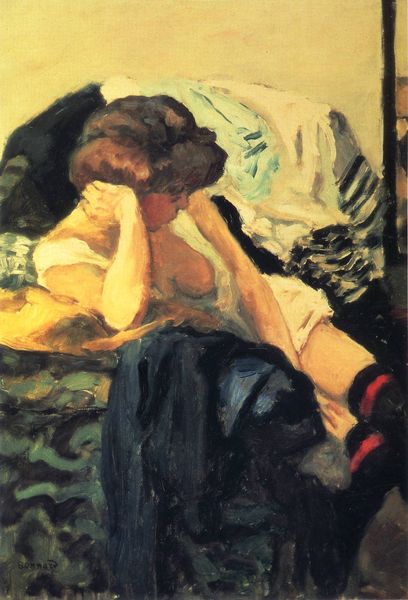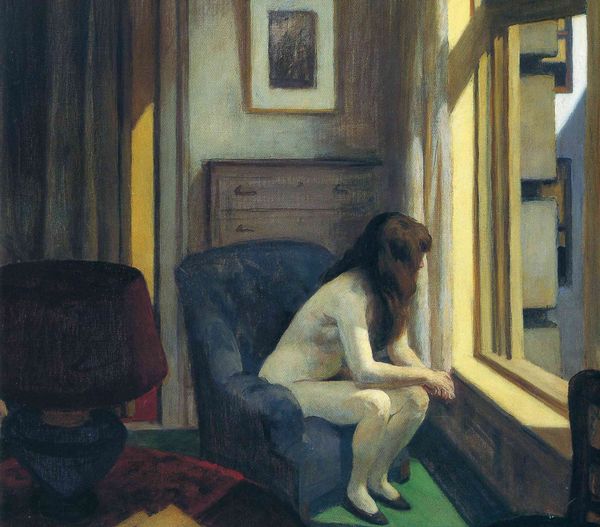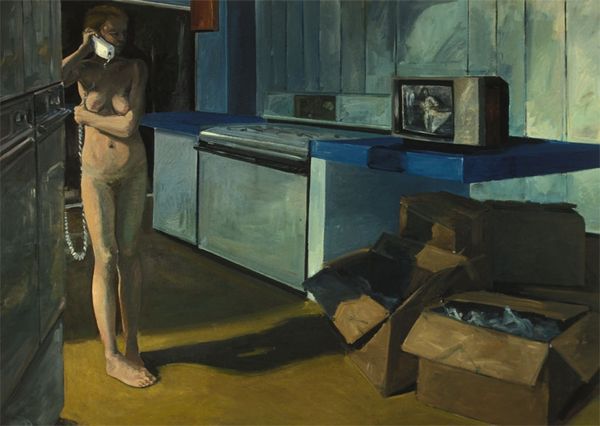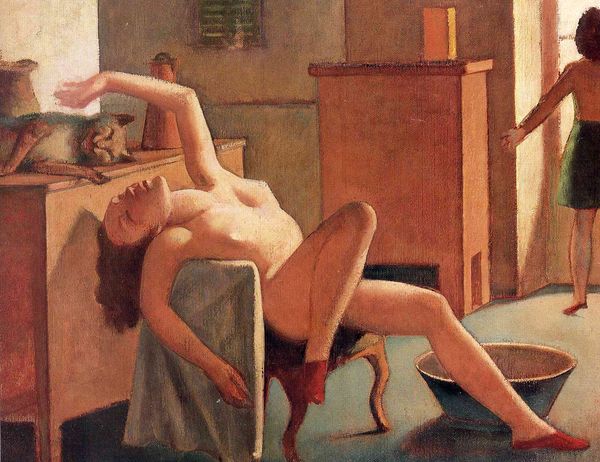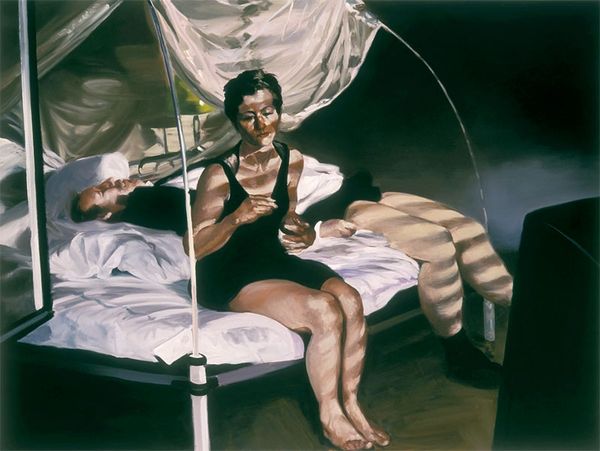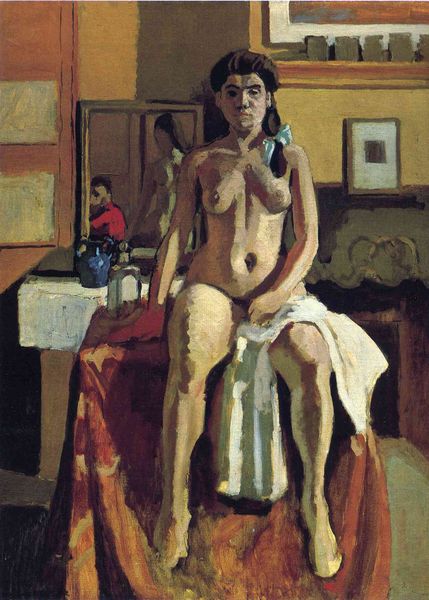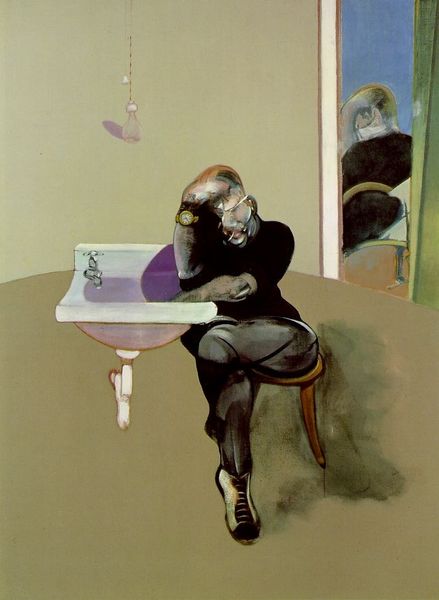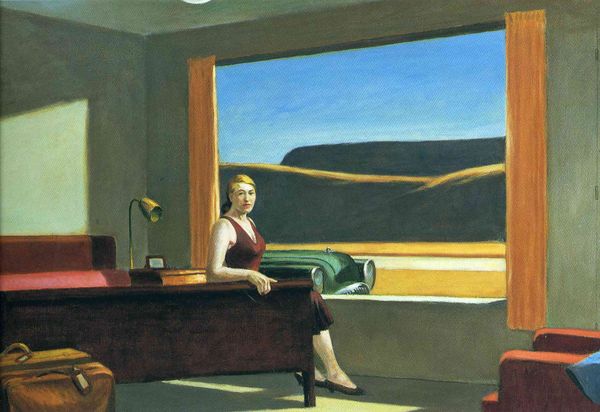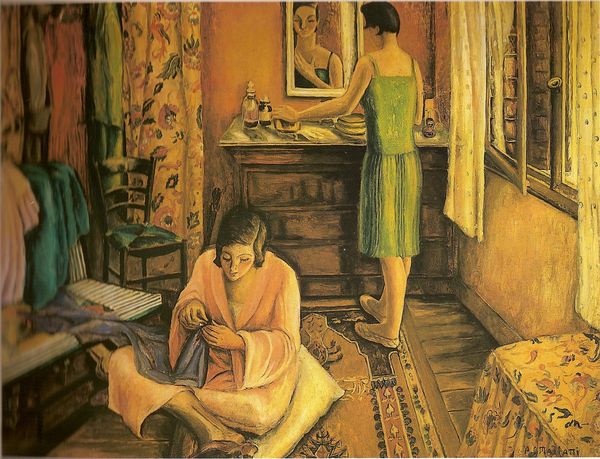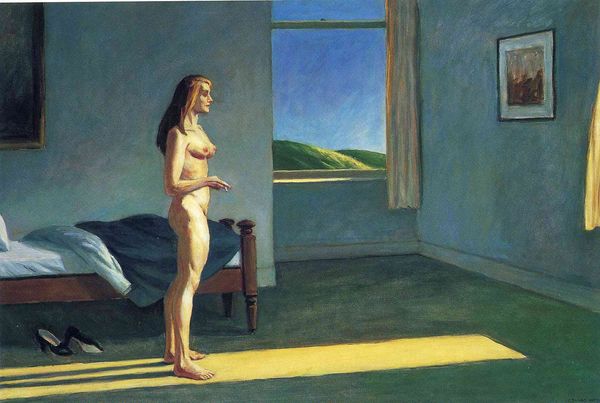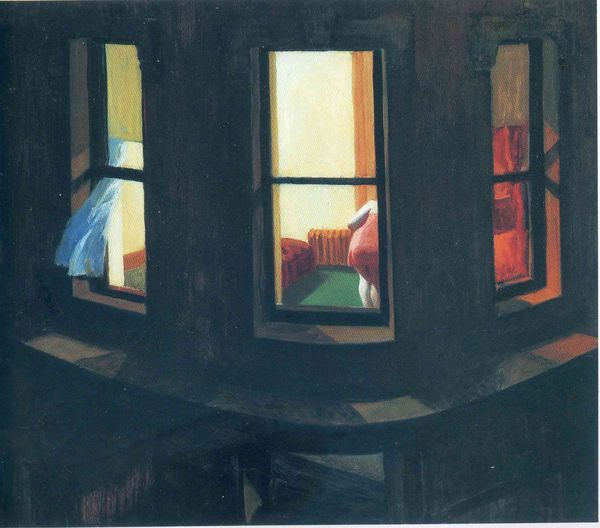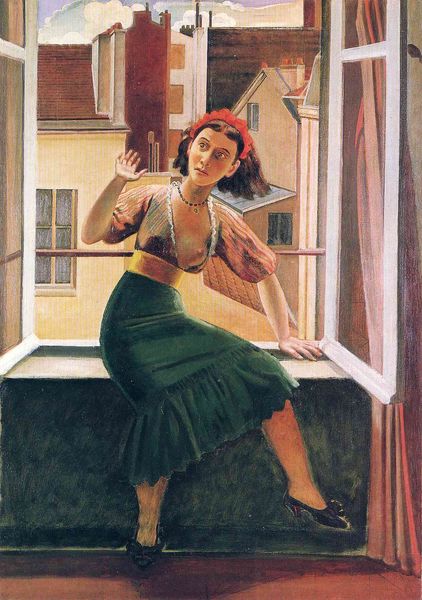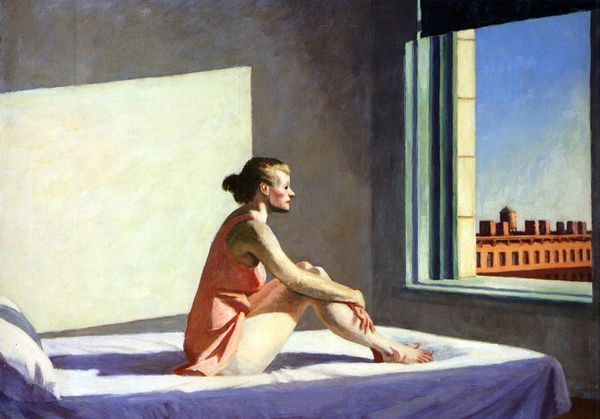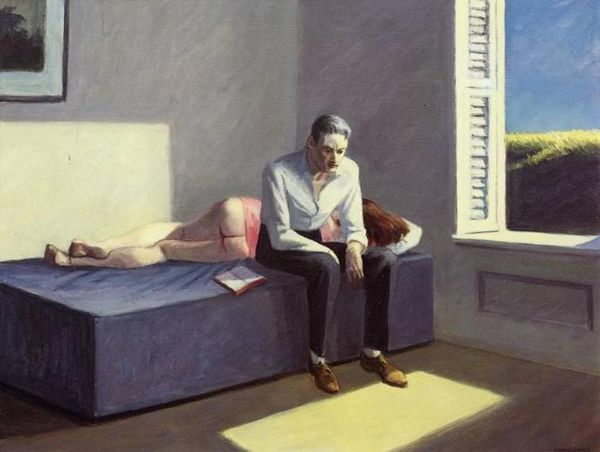
Copyright: Edward Hopper,Fair Use
Curator: Edward Hopper's "Hotel Room," completed in 1931 using oil paint, presents a study in quiet contemplation and perhaps, isolation. Editor: It has a distinct melancholy, doesn’t it? The woman's downcast gaze, the stark geometry of the room itself, creates a very potent sense of loneliness and vulnerability. Curator: Absolutely. The composition, for example, hinges on this striking contrast between light and shadow, mirroring the sitter’s interior state of being. Hopper uses light as a tool to flatten form and call attention to geometric simplification. Editor: But also think about what a "hotel room" signified in the 1930s, particularly for women. It’s a liminal space, connected to travel, maybe work, definitely mobility. The open suitcase is a subtle hint to the woman’s itinerant existence, a woman perhaps stepping outside traditional gender roles but at what psychic cost? Curator: An insightful reading. We could also focus on the pure visual tension between the diagonals created by the woman's legs versus the emphatic verticals found in the architecture, or even the restrained, almost minimalist color palette. What this creates for the viewer is visual austerity. Editor: It is stark, though her semi-nudity begs questions too. She's clearly presenting herself to the male gaze, yet seems so deeply interior. Is she a sexual object, a person lost in thought, or something in between? That ambiguity complicates a pure formal reading. Curator: You are right that this very state of limbo that he puts the subjects in, it makes a powerful case to viewers to actively decipher not only the subject but also Hopper's narrative making. Editor: Agreed. The painting ultimately speaks to the complexities and contradictions inherent in the modern experience, particularly, as a woman navigating it at that time. Hopper provokes such meaningful considerations, even decades later.
Comments
No comments
Be the first to comment and join the conversation on the ultimate creative platform.
